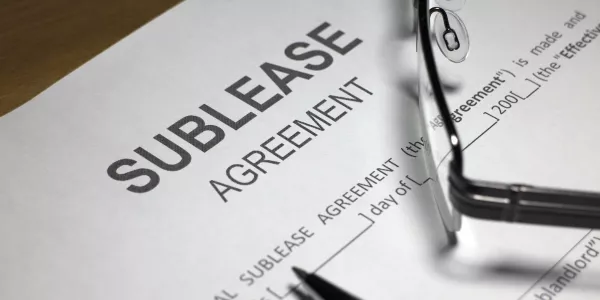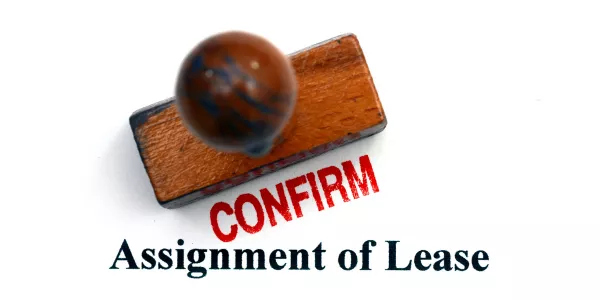Subletting is a term you might have come across if you're in the rental market, either as a tenant or a landlord. It refers to a practice where an individual who is currently leasing a property re-rents it to another person. This practice, while common, comes with its own set of rules and implications.
In case you find yourself in a situation where you have to relocate prematurely, switch out a current roommate, or introduce a new individual into your lease agreement, understanding the details of subletting can clarify many things. If you are interested in this topic, keep reading!
What is the Meaning of Subletting Rent?
Subletting rent means that a tenant, who has signed a lease agreement with a landlord, decides to rent out the property to a third party. The original tenant is still responsible for the lease agreement and must continue to pay rent to the landlord, but they also collect rent from the subtenant.
What is the difference between ‘sublease’ and ’sublet’?

Although the words "sublease" and "sublet" are frequently used as synonyms, there are minor distinctions between them. The term "sublet" is usually associated with residential properties, whereas "sublease" is more commonly used in the context of commercial spaces.
"Relet" is another term that's closely related but has a different meaning. It involves creating a new lease agreement with a new tenant, who then shares responsibility with the original tenant for paying the landlord and maintaining the property.
How Do You Sublet an Apartment?
To sublet an apartment, the original tenant should take the following steps:
Check the Original Lease Agreement
Before initiating a conversation with your landlord, your initial step should be to review your lease agreement. Check if there is any clause regarding subletting. Typically, if subletting isn't mentioned, it's generally permitted.
However, even in cases where subletting isn't specifically addressed in your lease, it's prudent to confirm with your landlord. Doing so ensures that you're on firm ground, especially if you already know what your lease says about subletting. In scenarios where the lease doesn't outright prohibit subletting, most landlords are understanding of the various valid reasons for wanting to sublet.
Seek Landlord Approval
If subletting is not mentioned or is allowed in the lease, get written permission from your landlord. If you can reassure them that rent payments will continue to be made promptly and that you have personally screened the new tenant, you stand a good chance of obtaining your landlord's approval.
Find a Suitable Subtenant
This involves advertising the space, conducting interviews, and vetting potential subtenants. Numerous websites exist for listing a sublet apartment. In the current digital age, the majority of individuals locate their prospective homes online, so you're likely capable of finding a subtenant on your own.
However, if you encounter difficulties or lack the time, engaging a skilled real estate agent is always an option. If you opt to promote your sublet independently, there are various online platforms and social media channels that can assist you in this process.
Draft a Sublease Agreement
This should outline the terms and conditions of the sublease, including rent amount, payment dates, and lease duration.
Although the hope is to avoid legal confrontations, possessing a signed agreement in place adds a level of formality and serves as a clear indication to your new subtenant of their obligations, which include keeping the apartment in good condition and paying rent punctually. You can easily find standard sublet agreements online, or alternatively, seek assistance from your landlord in this matter.
Manage the Sublease
As the original tenant, you are responsible for your subtenant and need to ensure they abide by the terms of the sublease. Decide on an arrangement regarding the transfer of utility bill responsibilities. The incoming subtenant might have to set up their own utility accounts and take on full financial responsibility for them.
How Do I Ask for Permission to Sublet?

Even if your lease and local regulations allow subletting, it's essential to obtain your landlord's approval. To do this effectively, familiarize yourself with your lease's subletting terms, and seek clarification if needed. Here are some steps:
Write a Formal Request
This should be a written document, stating your intention to sublet, the reason for subletting, and the duration. By doing this you can prevent future misunderstanding between you and the landlord. And also showcase your willingness to do everything by the law.
Provide Information About the Potential Subtenant
Including background checks or references can help persuade your landlord. Will be more likely for your landlord to accept the new subtenant if he has proof of the new subtenant income and commitment with the agreement.
And naturally, the landlord will have some common questions such as: “Does the subtenant have pets?”, “Does he/she smoke?”, “When does he/she pretend to move?”, “Does he/she like to throw parties?”, etc. So, answering these questions to your landlord will give him/her peace of mind. By doing this, you will also highlight benefits for the landlord.
Seek Legal Advice
If necessary, consult a lawyer to understand your rights and obligations. For example, if your lease agreement is ambiguous about subletting, a lawyer can help interpret the terms. Or if your landlord objects to your subletting plans or if there are disputes, legal advice can help navigate these issues.
What are some alternatives to subletting?
If you're uncertain whether subletting suits your needs, explore other alternatives:
Lease Assignment

This involves transferring your entire lease to another person. Unlike subletting, where you remain responsible for the lease, in a lease assignment, the new tenant takes over all responsibilities and you are released from the lease.
Negotiating with Your Landlord

Speak with your landlord to see if they're willing to allow an early termination of your lease. They may agree, possibly with conditions like a termination fee.
Finding a Replacement Tenant

Instead of subletting, you can help your landlord find a new tenant to sign a fresh lease. This can be an attractive option for both you and the landlord, as it provides a more permanent solution.
Short-Term Rental Platforms
Services like Airbnb or VRBO can be alternatives if your lease and local laws allow it. This option is best for short-term needs and often requires landlord approval.
Roommate Arrangements
If you have a roommate and your lease allows it, you might be able to arrange for them to take over the lease or find someone to replace you.
Lease Break Option
Some leases have a break clause allowing you to terminate the lease early under specific conditions. Check your lease agreement for such a clause.
People also ask
What are the pros and cons of subletting?
Subletting can be a practical solution for many, but it's important to weigh its advantages and disadvantages:
Pros of Subletting
- Financial Relief: It helps the original tenant cover rent expenses, especially if they need to move temporarily and can't afford to pay rent at two places.
- Flexibility: Subletting offers flexibility to tenants who need to leave for a short period without breaking their lease agreement.
- Keeping the Lease: It allows tenants to maintain their lease and return to the property after the subletting period.
- Opportunity for the Subtenant: Subletting provides housing options for people needing short-term accommodation without committing to a long-term lease.
- Income Source: It can be a source of income if the sublet rent is higher than the original rent (though this may be subject to legal restrictions).
Cons of Subletting
- Legal and Lease Complications: Not all lease agreements allow subletting, and it's often subject to landlord approval. There are also legal aspects to consider based on local laws.
- Financial Risk: The original tenant remains responsible for the rent. If the subtenant fails to pay, the original tenant is liable.
- Potential for Property Damage: There's a risk of damage to the property by the subtenant, for which the original tenant might be held responsible.
- Relationship with Landlord: Subletting can potentially strain the relationship with your landlord, especially if problems arise with the subtenant.
- Administrative Burden: Finding a reliable subtenant, drafting a sublease agreement, and managing related logistics can be time-consuming and stressful.

 Marcio Vasconcelos
Marcio Vasconcelos





